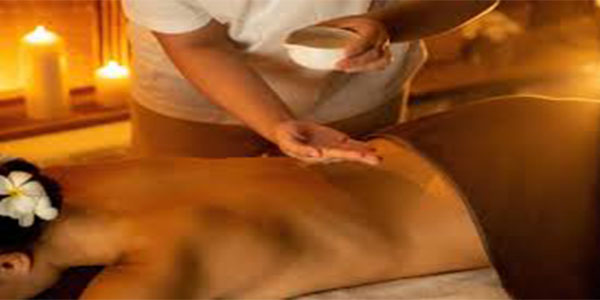
Of course! Here is a comprehensive overview of Swedish Massage, covering its principles, techniques, benefits, and what to expect during a session.
What is Swedish Massage?
Swedish Massage is the most common and widely practiced form of massage therapy in the Western world. It is a classic, holistic approach designed to relax the entire body by rubbing the muscles with long, gliding strokes in the direction of blood returning to the heart.
The primary goals are to:
- Relax the entire body.
- Improve circulation.
- Ease muscle tension.
- Increase flexibility.
- Promote a sense of well-being.
The Five Core Techniques of Swedish Massage
A Swedish Massage session is built around five fundamental hand strokes, which are often combined and customized by the therapist.
- Effleurage (Gliding)
- What it is: Long, flowing strokes, usually at the beginning and end of the session or when transitioning between areas.
- Purpose: To warm up the muscle tissue, spread oil or lotion, relax the client, and promote venous return (blood flow back to the heart).
- Petrissage (Kneading)
- What it is: Deeper, rhythmic strokes that include kneading, rolling, and squeezing the muscles.
- Purpose: To release tension, break up muscle “knots” (adhesions), and enhance circulation by lifting and separating muscle tissue.
- Friction (Deep, Circular Pressure)
- What it is: Deep, targeted, circular or cross-fiber strokes applied with the fingertips, thumbs, or elbow.
- Purpose: To break down deep-seated muscle tension and scar tissue, and to improve mobility in specific areas. This is often the most intense part of the massage.
- Tapotement (Percussion / Tapping)
- What it is: A series of brisk, tapping, cupping, or hacking movements. Think of the classic “karate chop” motion.
- Purpose: To invigorate and stimulate the muscles, nerves, and circulation. It’s often used on areas like the back and thighs to “wake up” the body.
- Vibration / Shaking
- What it is: A fine, trembling, or rocking motion applied by the therapist’s hands or fingers.
- Purpose: To relax muscles and release tension. It can also be used to shake out a limb (like an arm or leg) to create a sense of release.
Key Benefits of Swedish Massage
The effects are both physical and mental:
- Physical Relaxation: Reduces muscle tension and soreness.
- Improved Blood Circulation: Enhances oxygen delivery to cells and removal of metabolic waste.
- Stress Reduction: Lowers cortisol (the stress hormone) and increases serotonin and dopamine (feel-good hormones).
- Increased Flexibility: Warms and stretches muscles, tendons, and ligaments, improving range of motion.
- Lymphatic Support: Gentle stimulation of the lymphatic system can help reduce swelling and support the immune system.
- Mental Clarity & Improved Sleep: The deep state of relaxation can alleviate anxiety and promote better sleep patterns.
What to Expect During a Session
- Consultation: Your therapist will ask about your health history, areas of concern, and desired pressure (light, medium, or firm).
- Preparation: You will be left alone in the room to undress to your level of comfort and lie on the massage table under a sheet/blanket. You are always draped for privacy; only the area being worked on is exposed.
- The Massage: The therapist will use massage oil or lotion to reduce friction on your skin. They will use a combination of the five strokes, typically starting with your back and moving to your legs, arms, neck, and shoulders.
- Communication: It’s important to communicate with your therapist. Let them know if the pressure is too deep or not deep enough, or if you feel any discomfort.
- After the Massage: The therapist will leave the room so you can slowly get up and get dressed. It’s recommended to drink plenty of water afterward to help flush out any released toxins.
Swedish Massage vs. Deep Tissue Massage
This is a common point of confusion.
| Feature | Swedish Massage | Deep Tissue Massage |
|---|---|---|
| Primary Goal | Relaxation, overall circulation | Target chronic muscle tension, specific pain |
| Pressure | Light to medium | Medium to very firm, sometimes intense |
| Technique Focus | Long, gliding strokes on superficial layers | Slow, deep strokes focused on deeper muscle layers and fascia |
| Sensation | Soothing, relaxing | Can be a “good hurt” with possible soreness afterward |
| Best For | First-time clients, stress relief, general wellness | Chronic pain, rehabilitating injuries, repetitive strain |
Note: A good Swedish Massage can incorporate firm pressure, and a good Deep Tissue massage should not be unbearably painful. The lines can often blur in practice.
Who Should Consider Swedish Massage?
Swedish Massage is excellent for almost anyone, especially:
- People new to massage.
- Those looking to reduce stress and relax.
- Individuals with general muscle stiffness from daily life or sedentary jobs.
- Anyone seeking a boost in overall well-being.
Contraindications: Always inform your therapist of any medical conditions. Swedish Massage may not be suitable for those with fever, contagious diseases, certain cardiovascular conditions, recent injuries, or blood clots.
In summary, Swedish Massage is the quintessential relaxation massage. It’s a perfect entry point into the world of bodywork and a powerful tool for maintaining physical and mental health in our stressful modern world.
